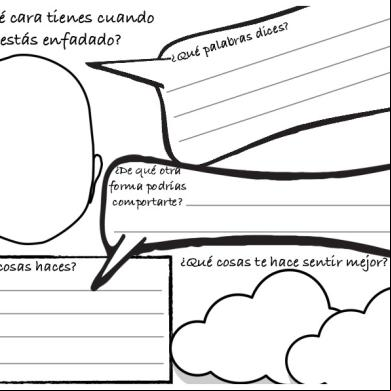Embedded Questions 141w52
This document was ed by and they confirmed that they have the permission to share it. If you are author or own the copyright of this book, please report to us by using this report form. Report 3i3n4
Overview 26281t
& View Embedded Questions as PDF for free.
More details 6y5l6z
- Words: 458
- Pages: 3
Embedded Questions Introduction An embedded question is a question that is included inside another question or statement. They are common after introductory phrases, such as: I wonder Could you tell me Do you know Can you Let's ask We need to find out I'd like to know Could you tell me I'm not sure Would you mind explaining
Five Rules for Using Embedded Questions Rule One If the embedded question is part of a statement, use a period and not a question mark at the end of the sentence. Also, if the question is in the present or past simple verb tense, omit the auxiliary verbs do, does, and did and change the verb to its appropriate form, as in the example below. Direct Question
What time did he leave?
Embedded Question
I wonder what time he left.
Rule Two If the embedded question includes an auxiliary verb or the verb "to be", reverse the positions of the subject and the auxiliary verb, as in the examples below.
Direct Question
What did he say?
Embedded Question
Could you tell me what he said?
Direct Question
Can you help me?
Embedded Question
I wonder if you could help me.
Direct Question
Is he a doctor?
Embedded Question
Do you know if he is a doctor?
Rule Three Do not use a verbal contraction at the end of the sentence. Direct Question
Where is she?
Correct Embedded Question
Do you know where he is?
Incorrect Embedded Question
Do you know where he's?
Rule Four Embedded questions are introduced by whether, whether or not, and if when there is no question word in the sentence (yes/no questions). Direct Yes/No Question
Will he be there? Do you know if he will be there?
Embedded Question
Do you know whether or not he will be there? Do you know whether he will be there or not?
Rule Five
The infinitive can follow a question word or whether in embedded questions, as in the following example. Direct Question
What should I do?
Embedded Question
Please tell me what I should do.
Embedded Question with an Infinitive
Please tell me what to do.
Using Embedded Questions There are times when native English speakers prefer to use embedded rather than direct questions. Here are two examples.
1. Politely Asking for Information Direct Question
Embedded Question
What time does the bus arrive? Could you tell me what time the bus arrives? (more polite)
2. Talking About Something Which Is Unknown to the Speaker Direct Question
Why did she decide not to come with us?
Embedded Question
I don't know why she decided not to come with us.
Note: The embedded question is in a statement , so it ends with a period, not a question mark.
Five Rules for Using Embedded Questions Rule One If the embedded question is part of a statement, use a period and not a question mark at the end of the sentence. Also, if the question is in the present or past simple verb tense, omit the auxiliary verbs do, does, and did and change the verb to its appropriate form, as in the example below. Direct Question
What time did he leave?
Embedded Question
I wonder what time he left.
Rule Two If the embedded question includes an auxiliary verb or the verb "to be", reverse the positions of the subject and the auxiliary verb, as in the examples below.
Direct Question
What did he say?
Embedded Question
Could you tell me what he said?
Direct Question
Can you help me?
Embedded Question
I wonder if you could help me.
Direct Question
Is he a doctor?
Embedded Question
Do you know if he is a doctor?
Rule Three Do not use a verbal contraction at the end of the sentence. Direct Question
Where is she?
Correct Embedded Question
Do you know where he is?
Incorrect Embedded Question
Do you know where he's?
Rule Four Embedded questions are introduced by whether, whether or not, and if when there is no question word in the sentence (yes/no questions). Direct Yes/No Question
Will he be there? Do you know if he will be there?
Embedded Question
Do you know whether or not he will be there? Do you know whether he will be there or not?
Rule Five
The infinitive can follow a question word or whether in embedded questions, as in the following example. Direct Question
What should I do?
Embedded Question
Please tell me what I should do.
Embedded Question with an Infinitive
Please tell me what to do.
Using Embedded Questions There are times when native English speakers prefer to use embedded rather than direct questions. Here are two examples.
1. Politely Asking for Information Direct Question
Embedded Question
What time does the bus arrive? Could you tell me what time the bus arrives? (more polite)
2. Talking About Something Which Is Unknown to the Speaker Direct Question
Why did she decide not to come with us?
Embedded Question
I don't know why she decided not to come with us.
Note: The embedded question is in a statement , so it ends with a period, not a question mark.











